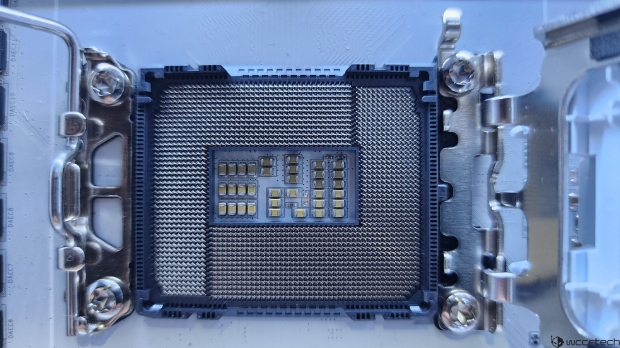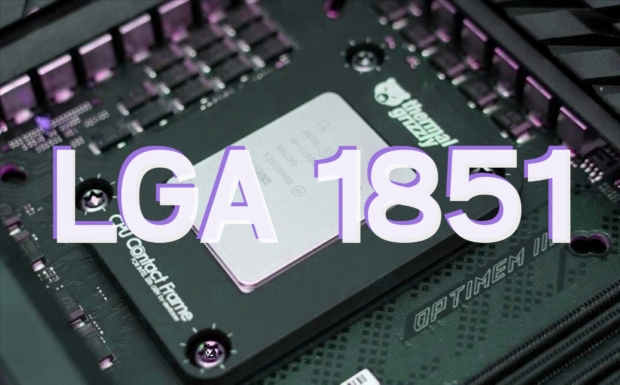Intel's next-generation Core Ultra 200 series "Arrow Lake" CPUs will arrive with a brand new LGA-1851 socket, which will receive an optional RL-ILM configuration with improved thermal performance without requiring a contact frame.
We're hearing the news on LGA-1851's new socket changes through hardware leaker "Jaykihn," which reports Intel's new LGA-1851 socket will have two different loading mechanisms. The first, is the traditional ILM solution that's compatible with existing coolers, while the other is "RL-ILM" (Reduced Load ILM) that's designed specifically for improved thermal performance, but with different compatibility requirements.
The loading mechanism itself is a metal structure that surrounds the socket -- in this case, LGA-1851 -- providing the mechanism to secure the CPU, seating it (safely) into the motherboard. Until now, Intel CPUs have used a single mechanism called the ILM (Independent Loading Mechanism) but the ILMs weren't great for overclockers, given that the mechanism reduced the contact area of the processor with the cooling solution, which isn't great for heat dissipation. That all changes with LGA-1851, it seems.
We saw multiple contact and direct-die frames that were created for Intel's 12th Gen, 13th Gen, and 14th Gen Core CPUs that enhanced the cooling capabilities of those processors -- as some of them, especially the K and KS series processors which run quite hot -- but now Intel has designed a dedicated RL-ILM that will make those problems a thing of the past.
- Read more: Intel's next-gen LGA 1851 socket spotted: ready for Arrow Lake-S CPUs later this year
- Read more: Intel's new 800-series platform for Core Ultra 200 'Arrow Lake' CPUs detailed in new leaks
- Read more: Intel Core Ultra 200V 'Lunar Lake' drops in September, Core Ultra 200 'Arrow Lake' in October
- Read more: MSI's next-gen Z890 and B860 mobos leaked: ready for Intel Core Ultra 200 'Arrow Lake-S' CPUs
Wccftech reports that the integration of RL-ILM is optional for companies, with improved thermal performance... that costs just $1 more than the stock configuration, with vendors (motherboard makers) who want to focus on high-end overclocking-capable motherboards, will use the new RL-ILM mechanism (why wouldn't they).
Jaykihn does note that the new LGA-1851 "RL-ILM" configuration has compatibility issues, given that the cooling heatsink would need to apply a minimum of 35lb of loading force to the CPU. This means that LGA-1851 processor owners wouldn't be able to use coolers that they own, but would need compatible CPU coolers with the loading mechanism.

On the other side, cooling manufacturers would need to provide the proper information for users that want to adopt the RL-ILM configuration for perfect compatibility. Another issue is, users who want the high-end overclocking squeezed out of their new Core Ultra 200 series "Arrow Lake" CPU will already have a high-end cooling solution, so hitting the loading force shouldn't be too much of an issue. If not, they'll need to buy a new CPU cooler.
Some more notes on the new LGA-1851 socket include an upward shift of 0.8mm on the board compared to the current-gen LGA-1700 socket, with motherboard-to-IHS height increased (ever so slightly) from LGA-1700 (6.831-7.497 mm vs 6.76-7.4mm).




